 Lissandra Support - A generous Queen that helps + Warding guide!
Lissandra Support - A generous Queen that helps + Warding guide!
 Thank You!
Thank You!
Your votes and comments encourage our guide authors to continue
creating helpful guides for the League of Legends community.
Recommended Items
Runes: Aftershock + Domination


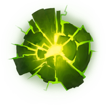
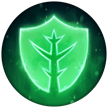

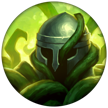

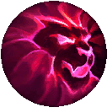
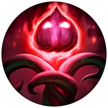


+8 Ability Haste
+10-180 Bonus Health
+10% Tenacity/Slow Resist
Spells:


Exhaust

Flash
Items
Ability Order Skill order


Iceborn Subjugation (PASSIVE)
Lissandra Passive Ability
Threats & Synergies
 Threats
Threats
 Synergies
Synergies
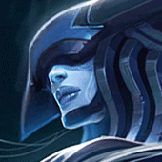 Show All
Show All
 Extreme Threats
Extreme Threats

 Ideal Synergies
Ideal Synergies

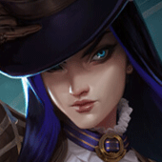
Caitlyn
Very high range, good poke and traps that can punish any claw or self-R. Her net can also make engages very difficult. Not unwinnable, but a good Caitlyn will not let you have any fun

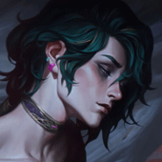
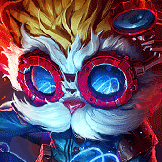
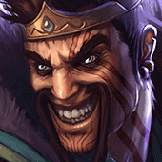
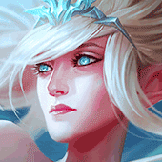
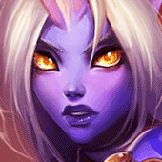

Lissandra
Lissandra is very compatible to herself uwu



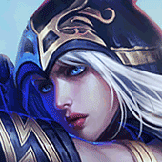
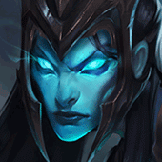
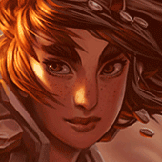
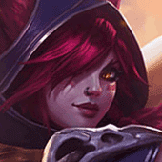
 Synergies
Synergies

Lissandra
Lissandra is very compatible to herself uwu







Champion Build Guide
My first exposure to
He dared a beer - I won that beer as I got to diamond with Lissandra support. Ever since then I've been testing several champs as a support. From
This guide is meant to be sort of like a university book but nicer to read and written by an amateur. I want to share my experience and knowledge and always add examples on what I mean. As much as I am not a fan of university math, I have to say that the german book "Teschl & Teschl Mathe für Informatiker Band 2" (Teschl & Tschl Mathematics for IT students volume 2) is a big inspiration for parts of my structure (and some quirky jokes) and if you are ever forced to do university math about integrals and derivaties in german, I can recommend the book.
In turn, this means that my guide will look less fancy, although I am trying to make it look a bit nice, and that I put more emphasis on presenting information and wanting you, the reader, to form your own opinion in what you prefer in each segment. For example, are you more of an
That being said, I hope you will enjoy reading my guide as much as I enjoy writing it!
PS: Since Katasandra doesn't update her guide anymore, I'm taking it upon myself to, at some point, make a mid Lissandra guide. I've recently been practising mid a bit and builds similar to mine have been working out well so far.


|
1.1. Why Lissandra? |

|
1.2. Why Tank? |

|
2. Rune explaination |

|
3. Abilities + Skill order |

|
4.1. Item explaination |

|
4.2. Sub-optimal items |

|
4.3. Sample builds |

|
5. Support upgrade - Which one do I choose? |

|
6.1 Playstyle - Laning Phase |

|
6.2 Playstyle - Mid- and Lategame |

|
7.1. Warding - Basics |

|
7.2. Warding - Why, when and where |

|
7.3. Warding - Tips, tricks and quirks |

|
7.4. Warding - Addendum |

|
8. Fun facts |

|
9. Closing thoughts |

|
10. Currently testing |

|
11. Personal skin tier list |

|
12. Changelog |

A friend of mine once described her as an "AP mage version of
This part will be slightly more informal due to this being a more personal matter that I've been fighting other Lissandra mains over ever since I've brought this up.

Burst vs Tank - Explaining the gist of burst mages
Let's start by looking at a few other champions people consider to be burst/poke mages:
All of these champions have one thing in common: They have range with which they can (usually instantly) pepper the enemy from afar and/or disable the enemy in the process, thus in theory not really needing defensive stats. This means that the champions's defensive stat is their range with which they can avoid damage in the first place:
Let us look at another batch of champions that can build burst items/are classified as burst mages that do not necessarily have a lot of range:
While
These champions either have blinks/dashes to get to safety, some sort of healing and/or minor dash to emerge victorious out of a trade or just mobility in general. This is similar in terms of advantages to range where mobility/sustain is meant to offset squishiness.
Suppose the following burst mage items:
All of these items are meant for burst mages and their stats reflect that: They all give AP. Some offer small amounts of HP, some mana, most Ability Haste and one Magic Penetration. And they all do their job well - they are meant to aid burst mages do their (burst) job better in exchange for no (proper) defensive stats.
I will go into more detail why these mythic items are not suitable for my playstyle in another section. For now just bear with me.
In turn, due to the lack of defensive stats, you are very squishy and have to use the defensive stats/methods you are given quite well. Otherwise you will die over and over again or...
...you fix the issue with defensive/utility items.
This is where items like
Now, let's look at  Lissandra:
Lissandra:
Does she fit into the category "Range"?
Not really:
Lissandra's Q
Well, can we put her into the category "Mobility/Dashes"?
Again, not really:
Besides
*I am not saying that Lissandra's

Burst vs Tank - The contradiction in  Lissandra's kit
Lissandra's kit
First, let's analize
I will soon add a section explaining Lissandra's spells in more detail. For now I assume that you know what her spells do
First we notice that E
That is where her Q
So basically:
| into | into | until low, | into | and |
Another very similar interpretation of her kit would be a short combo of
In summary:
| into | into | until low, | into | and | and |
These are the most common bread and butter combos on
To help convey my point and get a feel for my argument, I will again look at a few champions that are meant to be good in short trades and have means to still emerge victorious:
I again am using
Anyone who has ever played against a (good)
You might have noticed another pattern I want to be noticed:
All of these champions have some sort of spell/tool to ensure that they win the trade by either having a bit of sustain or damage mitigation in form of a shield or damage immunity, despite engaging into melee range. The champions in the category mobility, especially
Let's take another look at  Lissandra:
Lissandra:
...well, that's the thing: There really isn't anything in her kit to aid here as her passive only works once an enemy champion dies and nothing besides her R
So combo 2, in the long run, will cost us trades unless we manage to pick really good trades.
So what about "combo" 1 that is about poking the enemy down for a good all-in?
For this, let's compare these 3:
Now a bit of experience from my part: Hitting a Q
Now, I am aware that my explaination is basically "dude trust me" in regards to Lissandra Q, but even when looking at other spells that are meant for poke like
This shows that combo 1 isn't as reliable as it'd need to be to ensure a lot of successful all-ins.
I want to mention that I am NOT saying that it is impossible to poke your enemy down, otherwise high elo Liss mains wouldn't manage to do it. But it is quite hard to do and thus unreliable
So, to recap:
 Lissandra has no proper tools to survive a trade as she lacks lane sustain in comparison to champions like
Lissandra has no proper tools to survive a trade as she lacks lane sustain in comparison to champions like  Mordekaiser,
Mordekaiser,  Ahri or
Ahri or  Sylas
Sylas- She also lacks some sort of safety-mobility since her
 Glacial Path is a one-way blink in comparison to champions like
Glacial Path is a one-way blink in comparison to champions like  LeBlanc or
LeBlanc or  Katarina
Katarina  Ice Shard is a spell that feels slow due to it originating from Lissandra, only having respectable range once it hits a target and being quite predictable, therefore being quite unreliable to hit
Ice Shard is a spell that feels slow due to it originating from Lissandra, only having respectable range once it hits a target and being quite predictable, therefore being quite unreliable to hit Ice Shard pales in comparison to other poke tools like
Ice Shard pales in comparison to other poke tools like  Syndra's entire kit
Syndra's entire kit Ring of Frost in combination with
Ring of Frost in combination with  Glacial Path and
Glacial Path and  Frozen Tomb imply a short trade/all-in playstyle due to their ranges, synergy and cooldowns
Frozen Tomb imply a short trade/all-in playstyle due to their ranges, synergy and cooldowns
This is the contradiction in her kit: Her W-E-R are short trade/all-in spells that are meant to get prepped by Q, but Q is not reliable enough in most match-ups

For Resolve:
|
Aftershock is, besides |

|
versus |

|
7-35 HP healing per (soft) CC application per target on a 20 seconds cooldown, meaning 14-70 effective HP. This rune has become an empty husk of its former self, but it still viable if |

|
versus |

|
|
|
|
 Secondary tree: Overgrowth vs Font of Life
Secondary tree: Overgrowth vs Font of Life
For Domination:
|
The standard viable choice is |

|
versus |

|
|

|
versus |

|
With the "recent" change of Alterntively, if you think there will be longer fights, |

For Inspiration:
|
This is the rune I have been looking forward to the most. It is by far my new favourite on Lissandra support. If you go in, you root people with W |
|
Sometimes having 25 more movement speed in laning phase to avoid critical abilities like So get |
|
|

|
versus |

|
Looking at at the default core item build ( For this inconvenience, we will get 10 ability haste and 25 AP instead of 18 summoner spell haste and 10 item haste. Since |

Minor Runes:

|
Lissandra benefits from Ability Haste way more than raw AP because more Ability Haste means more
|

|

|
As hinted at, raw AP doesn't benefit us that much. Hence, we prefer the more defensive stats. In this case, this is either 2% Movement Speed or scaling HP (10-180). Math dictates we, if no Movement Speed buffs apply, get between 6.5 and 7.4 movement speed. This hardly matters due to
|

|

|
In this row, we have nothing but defensive options:
|

|
 Decision tree last row
Decision tree last row
To begin, let's go over
 official text + 1350 radius visualised
official text + 1350 radius visualisedStraightfoward ability: In a direction of your choice,
 Original text
Original textInstant AoE magic damage root. Simple, but effective and is the entire reason
 Original text
Original text Original text
Original textArguably the most iconic ability that
It is also worth noting that
Some useless knowledge:
 Original text
Original textThere are 2 skill orders:
Defensive/Engage:
> |
> |
> |
> |
> |
> |
Some Mobafire veterans will notice that the ability headers and structure are very similar to somebody else's guide. This is because I am using Katasandra's headers which they generously gave me the code for. I am eternally thankful for that and if you read this Katasandra, shoutouts to you! Even when their guide is outdated and not updated, it is without a doubt the magnum opus of
The following items are being ordered by how common they are being built:

|
Quintessential The only question that remains is: When should you prioritise Movement Speed is a very flexible stat and can help when you need to either get away or walk towards someone faster. Example situations for this could be playing against a |
|
Quintessential |
|
Quintessential Offering Magic Resist, increased Movement Speed and Tenacity, these boots are an ideal choice into teams that rely on a lot of stuns and roots. One key information about Tenacity: Suppressions (e.g. |

|
Basically always |
|
Pretty common You get all the things Liss would need: AP, AH/CDR and mana (as mana regen but it's still good). You also enable more damage for your allies with your entire kit which fits with a more aggressive minded playstyle. |
|
Pretty common Abyssal Mask now has 300 HP, 60 base MR and 10 Ability Haste for a whopping 2400! That sounds quite good... and then you read the passive: With your presence alone you decrease the enemy's MR aswell as increase your own per enemy champion. This item you should only build if your team has either a magic damage champion that carries you or if your team has a lot of magic damage. |

|
Pretty common Highly recommended against mostly AD comps. Mana, Ability Haste, armour and attack speed reduction - good allrounder item. You should build this item over However, a team like (Don't ask why the enemy would pick 4 AD champs, you know how soloQ goes...) |
|
Situational Highly recommended against crit AD comps. Slows, a ton of HP and crit damage reduction - what else would you want in that case? (A Lissandra dakimakura that I actually own kekw) |
|
Situational I've said it once but I'll say it again - these items are extremly underappreciated and are worth their gold. Dont rush them but keep them in mind. If you definitely need to ward a bit more often, build this item sooner. Alternatively, build this item if you have enough money for it, you cannot finish an item you were aiming for but you desperately need more stats. (An example I've run into: I have built Otherwise it should be the last item to finish. |

|
Situational The Anti-Heal choice if |
|
Situational Now, I know what you might be thinking. "Why Thornmail? Applying Anti-Heal with What if the enemy has a lot of healing champions that are AD based and you desperately need armour but anti-heal is a priority? (consider against In these cases, it is actually worth going for |
|
Situational Only if there is some CC your carry cannot avoid and you need them to survive. Only into CC heavy comps tho. |

|
Situational There are 3 key situations when you'd consider
The first two situations are fairly niché with the third being personal preference, making |
|
Situational Zhonya's is a good recommendation on Lissandra into certain matchups due to the vulnerability. Mentioned matchups would be Other than that, due to its cost, it has become very situational, but can still be built if just like its active. |
|
Uncommon A very good idea if you have a carry that needs to survive and you need armour, although the survivability of your carry is the main reason to buy |

|
Very uncommon/Personal Preference The selling point of these boots are the Ability Haste and the Summoner Spell cooldown reduction, enabling more frequent usage of |

|
Very uncommon |

These are items that sound good on paper, but have some sort of drawback to them or are outclassed by other items to make them viable on  Lissandra support. Each item has a fitting reasoning
Lissandra support. Each item has a fitting reasoning
|
Too expensive Jak'Sho would be a very good allrounder item as it gives you armour, MR and Health. With its passive, you gain even more stats! So what's the catch? The price tag keeps it from being a valid support item. 3.2k for nothing but stats on a support's budget is only possible if you get a ton of kills - and we aren't trying to get kills. |
|
Underwhelming The stats on this item are quite good - 400 HP, 55 armour and 10 AH. Those are good stats. And its passive sounds nice: Dealing damage and healing 250% of the amount of damage dealt ensures a bit more survivability. However, the passive feels a bit too underwhelming. If you wanted similar stats but for less gold and be more supportive to your team, look no further than |

|
Extremely situational and underwhelming I was looking forward to this item. It seemed to fit a niché I was looking for: Healing and Shielding power + AP increase for fairly cheap (2700G) to increase And even when considering an increase to  Math MathThe only other selling point of the item would be the summoner spell Ability Haste, but we already have |
|
Doesn't work with In theory, this item could help Liss out in the healing niché with |

|
Passive doesn't slow on The stats on Moreover, the acceleration trail only works on area you walked on. And since |
|
Too underwhelming without AP While the magic penetration would be a fairly wasted stat (we aren't focused on damage here), the AP, Ability Haste and its passive sound worth a try. However, with a base heal of 85 (50 + 35 from the item itself), one should ask why However, if you were more interested in building more AP items like Do cryptobros buy this item first because like "cryptobloom"? |

|
Slow doesn't stack with The price for its stats is good: 2.2k gold for quite good stats. And the passive dealing up to 250 magic damage with a 30% slow sounds like a good piece of utility. Yet there are a few issues: If you wanted an armour item with a bit of ulility, why not get Now, the second main selling point besides the stats are its passive which procs whenever you ult. Here comes up the next issue: The item sounds nice, but underdelivers in every way for |
|
Outclassed by This used to be the number 1 Magic Resist option. So why has While From experience, I can say that by the point you'd get the 125 Magic Resist, the shield from The only stats |

|
In general, I found that However, if you are looking to survive an engagement for a bit longer, You also cannot go wrong with this upgrade. Least supportive upgrade and outclassed by |

|
I suggested this build as the "default" build as it covers you against most things that might happen: - - - - - - |
|
Very similar to the default build with the exception of swapping
- ← → Alternatively, if the enemy has a lot of crit based auto attack based champions, getting |
|
Personal recommendation against very heavy AP teams
- Rarely will there be a team without any magic damage, making - |
|
Personal recommendation against very heavy AD teams
- ← As previously mentioned, . |
|
Here, we decided to add
- The build on the ← left is more focused against AD teams and the build on the → right is more balanced |

|
In this build we decided to insert
- With - The build on the ← is focused on AD teams, while the build on the → right is more balanced |
|
A snowballer's build across the map, relying completely on AP and
- - |
|
The previous build, but the boots have been swapped for a more lane/lower half focused playstyle
|
|
These builds will be useful when you need anti-heal and the enemy will generally not auto attack you, making The build on the ← is focused on AD teams, while the build on the → right is more balanced |
|
NO.
|

For warding specific playstyle tips, check 7.2. Warding - Why, when and where
As per usual with botlane matchups, there is no simple answer as just play safe or just go in. Rather, the question on how to behave in lane depends on several factors; to list the most important:
- What are my strengths and weaknesses?
- What are my ADCs strengths and weaknesses?
- What makes me and my ADC strong?
- When are we at our strongest?
- What are the enemy supports strengths and weaknesses?
- What are the enemy ADCs strengths and weaknesses/weakest?
- When is the enemy at their strongest?
- Who is the enemy jungler and what does that mean for my lane?
- Who is my jungler and what does that mean for my lane?
Questions like these dictate what the League community likes to call win conditions, or win cons short and winning lane specifically for lane. As the name implies, these are conditions that enable your team to win the lane/game.
A well-known example for this would be getting a
Due to the sheer volume of possible bot lanes, explaining every single bot lane matchup in full detail would be extremely time consuming. Therefore I will attempt analyse a few match-ups, answer a few of the questions above in each and attempt to present guidelines to follow at the end of this section.
|
Strengths
+ Very good slows due to + Decent poke with + + Strong initiation with + High auto attack range (600 units) + Synergises well with + |
Weaknesses
- No mobility whatsoever- Low upfront damage - - Ganking her is fairly easy - No sustain |
It goes without saying that these two gets their biggest powerspike at level 6 - Getting someone locked up for up to 6.5 seconds is nothing an enemy can take easily.
|
Strengths
+ Very strong poke+ Good follow-up thanks to + Easy way of scouting bushes with + Strong pressure when you are low ( |
Weaknesses
- Low mobility- Mediocre in longer lasting fights ( - No sustain (Unless Jhin uses |
- Due to the sheer amount of CC these two have, setting up ganks is very easy. Whoever you jungler is, a gank is bound to at least burn the enemy summoner spells.
- Any mispositioning mistake by the enemy can be abused to a fatal degree - abusing mispositioning is one of their strengths as either can make it easier for the other to keep an enemy in place
- Sort of related to the second point: Once
 Ashe is able to activate
Ashe is able to activate  Ranger's Focus, unless she gets hit by some sort of CC, she will melt (ha) any enemy foolish enough to be in her range;
Ranger's Focus, unless she gets hit by some sort of CC, she will melt (ha) any enemy foolish enough to be in her range;  Lissandra will make sure of that. And if
Lissandra will make sure of that. And if  Lissandra picked up
Lissandra picked up  Font of Life,
Font of Life,  Ashe can even take riskier fights thanks to due sustain
Ashe can even take riskier fights thanks to due sustain - Even the decision making is aided by
 Hawkshot: Often enough, fights are lost due to the jungler convenientely showing up when going in. This makes it easier to prepare whatever you are planning: Poking down the enemy, reading an enemy's bluff... And in the best case,
Hawkshot: Often enough, fights are lost due to the jungler convenientely showing up when going in. This makes it easier to prepare whatever you are planning: Poking down the enemy, reading an enemy's bluff... And in the best case,  Hawkshot makes the enemy jungler drop the idea of ganking you as you already know that they are botside anyways
Hawkshot makes the enemy jungler drop the idea of ganking you as you already know that they are botside anyways
If the enemy is
If longer trades don't work out , e.g. due to jungle or mid attention, waiting it out for level 6 and taking as little poke as possible is the safest bet as you unlock your strongest phase with

|
Strengths
+ Strong pressure when you are low (+ Good follow-up thanks to + Easy way of scouting bushes with + + He yells four |
Weaknesses
- Low mobility (Movementspeed from - Mediocre in longer lasting fights due to low DPS ( - No sustain (Unless Jhin uses - Ganking him is fairly easy if - Bad synergy with - Annoying if you don't like the number four |
Starting level 2, there isn't really a time where they aren't strong. While they don't have as much synergy as
|
Strengths
+ Very strong poke+ Very high range (Minimum of 700 units range on + High kill pressure once rooted ( + Quite good in longer fights ( |
Weaknesses
- Low mobility (- No sustain (Unless - Without |
 Jhin's ability to follow up to any play with
Jhin's ability to follow up to any play with  Deadly Flourish is the core reason they work so well since it keeps enemies in place for a bit longer, potentially enabling up to 5.4 seconds of crowd control (
Deadly Flourish is the core reason they work so well since it keeps enemies in place for a bit longer, potentially enabling up to 5.4 seconds of crowd control ( Ring of Frost 1.65s +
Ring of Frost 1.65s +  Frozen Tomb 1.5s +
Frozen Tomb 1.5s +  Deadly Flourish 2.25s)
Deadly Flourish 2.25s)- Especially with
 Aftershock,
Aftershock,  Jhin and
Jhin and  Lissandra can take short trades and emerge victorious due to his high damage potential with
Lissandra can take short trades and emerge victorious due to his high damage potential with  Whisper's 4th shot, only getting better if the
Whisper's 4th shot, only getting better if the  Jhin player planned accordingly with additional
Jhin player planned accordingly with additional  Dancing Grenade bounces and
Dancing Grenade bounces and  Captive Audience traps
Captive Audience traps - As previously mentioned,
 Lissandra can help a
Lissandra can help a  Jhin hit the right targets when
Jhin hit the right targets when  Curtain Call is cast
Curtain Call is cast - While
 Lissandra's ability to deny a gank is good, with a few additional
Lissandra's ability to deny a gank is good, with a few additional  Captive Audience traps by
Captive Audience traps by  Jhin can make it even easier and even provide vision at key point
Jhin can make it even easier and even provide vision at key point
If there is one thing both of these junglers want to do, it is ganking a lot early in order to get ahead. Both deliver a good amount of CC (
In
This is one of those match-ups where you will definitely have to consider asking your jungler to help. The low mobility of the enemy team and your ability to follow up an engage are very good reasons for your jungler to help you out.
This playstyle doesn't really change past level 6 with the exception of getting aid by

|
Strengths
+ Very high damage (+ VERY high snowballing potential ( + Good follow-up ( + Very good in medium length fights + Good synergy with + DRAAAAAAAAAAAAAAAAAAAAAAAAAAAAAAAAAAAAVEN |
Weaknesses
- Alright mobility (- Very predictable fighting pattern ( - No sustain (Unless - Besides - Bad from behind |
Even at level 1 are the two fairly strong, although
|
Strengths
+ Big cheese potential (+ Camouflage can enable escapes ( + Good shielding ( + Good disengage ( + Exceptionally good in longer, clumped up fights ( + Flexibility in build ( |
Weaknesses
- Low mobility- No sustain (Unless - Fairly predictable if anticipated (Infamous - - Mediocre neutral game - - I WAS HIDING! HAHAHAHA GR |
- With
 Draven's lack of crowd control,
Draven's lack of crowd control,  Lissandra compliments that well due to her abundance of crowd control
Lissandra compliments that well due to her abundance of crowd control - Similar to
 Jhin, Draven can follow up your engages well by running faster towards the enemy with
Jhin, Draven can follow up your engages well by running faster towards the enemy with  Blood Rush and keeping them slow a bit longer with
Blood Rush and keeping them slow a bit longer with  Stand Aside
Stand Aside - If
 Draven wants one enemy dead,
Draven wants one enemy dead,  Lissandra can tell that enemy to not move
Lissandra can tell that enemy to not move - Once
 Draven is ahead, he will be focused down. Yet again, due to
Draven is ahead, he will be focused down. Yet again, due to  Lissandra's crowd control and potential item choices, she can keep him alive
Lissandra's crowd control and potential item choices, she can keep him alive
Similar to the last match-up, both of these junglers aim for early advantages in order to snowball. In this case, the difference is that
In
Warding against
One word: Aggression.
In order to do that, a level 2 push is mandatory as every single advantage in lane needs to be grasped.
Despite this clear game plan, they should not fall for any cheese tactics by
Most importantly, the enemy cannot be allowed to reach the mid to late game as

|
Strengths
+ Very good DPS with + + Good defensive tools ( + Very good in long fights + Above average sustain ( + Snek |
Weaknesses
- Modest mobility (- Extremely mana hungry/useless without mana - Cannot buy boots and its upgrades( - Sustain requires AP ( - No synergy with |
Level 2 enables
It is thereby advised to either turn in a win with this risk or wait for
*Technically any poision will do, so either
|
Strengths
+ High DPS (+ Very high backloaded damage ( + Lots of lockdown ( + Save potential + low shielding ( + Very good in longer, clumped up fights ( + Untargetability on + |
Weaknesses
- Low mobility (- No sustain (Unless - Missed - |
- As per usual with DPS powerhouses, they need peel and/or lockdown to enable dishing our their damage.
 Lissandra can provide these necessary attributes
Lissandra can provide these necessary attributes - Due to AP items being more versatile than crit items,
 Cassiopeia can afford to build defensive items like
Cassiopeia can afford to build defensive items like  Banshee's Veil,
Banshee's Veil,  Zhonya's Hourglass or
Zhonya's Hourglass or  Seraph's Embrace, giving
Seraph's Embrace, giving  Lissandra a bit more time to react to all kinds of plays by the enemy
Lissandra a bit more time to react to all kinds of plays by the enemy - The combination of
 Miasma onto any target hit by crowd control by
Miasma onto any target hit by crowd control by  Lissandra can secure kills due to
Lissandra can secure kills due to  Miasma's grounded effect
Miasma's grounded effect
In both cases, the usual warding spots should help out.
The core idea is surviving the laning phase and getting into the mid to late game.
Mentioned situation will sadly rarely happen - with

As formerly adressed, the amount of match-ups are endless*. The aim of this segment was to give a rough idea of analysing a match-up and deciding what the game plan for laning phase is - knowing your lane partner's strenghts, weaknesses, strong phases, power spikes and assumed behaviour. The same deal goes for the enemy and their behaviour. This knowledge should aid in knowing what the goal of laning phase is and lead to a winning lane.
As shown by the stark contract between the
In any case, laning phase tends to end after turrets have fallen and people roaming across the map, eagerly awaiting either 5v5 teamfights, rigorous splitpushing in a 1-3-1 fashion or getting objectives like
With this chapter, I'm hoping that you, the reader, have seen the basics of how to identify strengths and weaknesses of each laner (and potentially every champion!), how to behave in a lane and identifying what the win con of each respective lane is.
This concludes the "Laning Phase" section of the Playstyle chapter. In the following chapter, we will talk about the mid- to lategame behaviour of
 *amount of match-ups
*amount of match-ups
For warding specific playstyle tips, check 7.2. Warding - Why, when and where
Past level 6, I want you to think about a job that we all tend to forget, never want to do but we secretly all respect:

The trusty janitor. A janitor's job is to keep a building clean and intact, repair things if needed, keep bugs out and keep things in check. This tends to include some dirty and unfun work including talking with potentially rude people, but they are basically keeping the building afloat. And the worst of all? Not a lot of people tend to even acknowledge the janitor!
As Lissandra support, you are the janitor of your team.
Your job is to keep the team together, to check on your enemies and holding them at bay for your team. You will do all the warding that maybe your teammates won't even see and take for granted; and if you are lucky, maybe a teammate will notice your work and praise you for it.
You might need to
- She excels at locking enemies down
- She can play aggressively aswell as defensively due to
 Glacial Path's flexibility
Glacial Path's flexibility
- She is one of the best anti-carries and being behind on
 Lissandra doesn't mean much as 3 seconds of hard CC will always be relevant, no matter the circumstances.
Lissandra doesn't mean much as 3 seconds of hard CC will always be relevant, no matter the circumstances.
- Tank items are very flexible and due to their sheer amount, as long as you roughly know what you need, you can never really go wrong with them
- And if you need a bit more damage, Lissandra's superb AP scalings enable her to get the most out of the AP you get
No Patrick, we will not consider  Experimental Hexplate a viable option just because of its ultimate haste
Experimental Hexplate a viable option just because of its ultimate haste
To use this flexibility, we again need to ask ourselves a few questions:
- What is my team's composition?
- What is the enemy team's composition?
- What are my team's strengths and weaknesses?
- What are the enemy team's strengths and weaknesses?
- How does my team want to fight?
- How does the enemy team want to fight?
- What is the relation of damage types in the enemy team?
- Who is the most fed in either team?
- Which items will I have to build?
- What is the priority of the items I will need?
- How will I have to play then?
In order to show off this flexibility in playstyle, we'll go over a game's teamcomp on both sides, similar to the laning phase segment, try to answer a few of the questions.

|
Strengths
+ Very high amounts of crowd control+ Good engages and peel + High physical and magical DPS + Good follow-up to any play + Good amount of damage + |
Weaknesses
- Ashe is the only physical damage dealer- Alright poke - Very low sustain - Only 1 shielding instance on a high cooldown - Without |
Your team is as traditional as it can get: Lots of crowd control, two damage dealers with good DPS of each type, a solid frontline and follow-up. 5v5 front-to-back teamfights and picks are your forté as whoever wants to reach your damage dealers will get denied from doing so. Reaching the backline will be difficult, but that isn't a priority as with all the DPS and frontline your team has, getting rid of
|
Strengths
+ Strong poke+ Long range engage + Frequent team wide shielding and in-fight healing + Unattended + Good front- and backloaded damage + Long range capabilities |
Weaknesses
- Bad DPS- Mediocre peel - No out-of-combat healing without backing - Not that good at reaching your backline without sacrificing frontline |
Their plan is simple: Poke your team down, get picks and get ahead before your team can muster up their strength; essentially a snowballing composition. Alternatively, they could attempt to give
| - High physical and true damage |
| - Medium magical damage |
| - High magical damage |
| - High physical damage |
| - High magical damage |
As we can see, the enemy team has lots of both types of damage, meaning we will have to consider both types of defensive stats. Their physical damage is mostly backloaded (
Most of the enemy's magic damage is frontloaded, with some continuous magic damage with
Let me preface this by saying that
This question requires you to examine the current game state. Let's go through 2 different scenarios. The bigger a champion icon, the more fed they are:
As we can see, our
In the last section, we concluded that valid magic resist item choices would be
The choice of magic resist item then boils down to a few factors: Are you interested in aiding
All three items are solid choices and depend on how your team will play the rest of the game and personal preference. In my case, I'd rather choose
 Kaenic Rookern costs 2900 gold, meaning that as a support after your first item (
Kaenic Rookern costs 2900 gold, meaning that as a support after your first item ( Locket of the Iron Solari), you are committing to magic restist for a while. By the time you can afford it, the enemy's AD sources might've caught on.
Locket of the Iron Solari), you are committing to magic restist for a while. By the time you can afford it, the enemy's AD sources might've caught on. Anathema's Chains might only cost 100 more gold, but is less flexible and doesn't have the aforementioned fail safe against
Anathema's Chains might only cost 100 more gold, but is less flexible and doesn't have the aforementioned fail safe against  Zac and
Zac and  Zyra.
Zyra.
With the choice of a second item, we still need an item against the enemy's AD choices:
Unlike the previous item, the choice here boils down to whether you need anti-heal or you trust
Laning phase was quite rough for you, as
In terms of magic resist,
This is where
Assume Scenario 1:
- The obvious plan is to lock
 Lux and other sudden threats down for the rest of your team to eliminate, assuming they are in range. In this case, your role is to be an engager besides
Lux and other sudden threats down for the rest of your team to eliminate, assuming they are in range. In this case, your role is to be an engager besides  Shen and
Shen and  Galio.
Galio. - Another plan is to let the engagers do their job and engage in peel duty for your
 Brand.
Brand.  Darius and
Darius and  Zac still have high base damage and have the option of either flanking or ignoring your frontline to beeline towards
Zac still have high base damage and have the option of either flanking or ignoring your frontline to beeline towards  Brand. Keeping them away with your abilities until the rest of your team handles the other 3 is a viable option to play the game out.
Brand. Keeping them away with your abilities until the rest of your team handles the other 3 is a viable option to play the game out. - If your vision game is on-point, you could even plan some excellent Gorgonzola cheese by picking out singular members of the enemy team that are out of position, ensuring a numbers advantage for the time being.
Generally, playing for
Assume Scenario 2:
- Engaging onto
 Jhin and/or
Jhin and/or  Zyra when on their own can turn the tide. With follow-up by at least 1-2 of your comrades, getting picks until your team is on even footing with the enemy should be a priority
Zyra when on their own can turn the tide. With follow-up by at least 1-2 of your comrades, getting picks until your team is on even footing with the enemy should be a priority - At the same time, keeping those very targets away from your damage dealers can mean just as much as picking off targets.
 Brand and
Brand and  Ashe's immobility have to be offset by your stuns and roots
Ashe's immobility have to be offset by your stuns and roots - Both plans are made easier with proper warding
In any case, you have to aim to abuse the enemy's weaknesses and keep their strength low: Engaging is a good idea due to their mediocre peel; if
As you can see, making the correct choice isn't that easy. In each scenario, the playstyle boiled down to what the team needs and how they play. It obviously should not make any sense to force engages onto
While this chapter might be shorter as the previous and arguably more important, it isn't any different. The same principles apply:
- Identifying each team's strengths and weaknesses
- Basing a default fight plan based on that
- Identifying each character's role in- and outside of a fight
- Your role based on these factors
- Builds and the priority of each item
It's the same idea but scaled up to 5v5s instead of 2v2s with a jungler sprinkled in.
I want to emphasise that this is by no means easy to do. In my case, it took me over 4-5 years to gather the necessary experience and apply it. So do not feel bad if you make mistakes. To quote

"The supreme art of war is to subdue the enemy without fighting." - Sun Tsu
Let's face it: We all know that wards are not just some fancy +30 gold for the enemy and we all know that we should use them more often. Vision wins games and can prevent an unfortunate engagement or enable picks since if you know where the enemy is, you can plan opportunistic strategies to get ahead and eventually win the game!
So, let us start with the very basics then by explaining what wards are, what they are capable of and what their limits are!
Disclaimer: The following segment is about the very basics of warding. If you are already familiar with these basics, feel free to skip to the more nuanced segments.

Setting up vision, ward limits and coverage
Stealth Wards - League's CCTV

|
The good old trusty A ward can reveal a circular area around itself with its radius being fairly big. They remain on their spot for 1,5 - 2 minutes, have 3 AAs worth of HP and after a delay of 3 seconds, they will remain camouflaged/invisible until they expire. You can, by default, place a ward by pressing 4 on your keyboard and clicking wherever you want to place it. By default you will get 1 ward in your trinket slot with a limit of 2 wards available to place. You can place up to 3 On the right you can see the game showing how many of your wards are currently active. |
   
|
How to get wards - earn 500 gold, get wards for free!

|
Wards are all fine and dandy, but how does one get these beautiful things? If you play support, you usually are meant to buy one of the following tier 1 support items: Congratulations, you can now place wards wherever your heart desires! Be wary that the tier 2 support items can store up to 3 wards at once. The tier 3 support items |
Replacing wards - lim(wards)=3
Wards and bushes - Watching grass grow
Now that we have covered what wards are, what they can do, how many we can usually carry and how far they can reveal the map, let's talk about vision denial, a concept as fundamental as vision setup.

Vision denial and control wards
Oracle Lens - Become a walking radar!

|
Before I explain
The gist of vision denial is destroying the enemy's wards and denying the enemy vision with
In the section about To illustrate, I decided to get a friend as a paid actor to help out: I asked my friend to put a I asked my friend to put a
As you can see, the
|
Control Wards - Purchasable wards???

|
Why would I ever buy a ward for 75 gold if I get them for free from either my trinket or my support item? What a scam!! - Timmy "Naive" Johnson That is because you actually get something in return for buying this beautiful, extremely useful red ward! I again got my paid actor to help out with this: Once again, Twitch is in his Once again, Twitch is in his This means that Lissandra herself cannot see him. Yet I see him because of the |
This covers the very basics of vision setup and vision denial. The following segment will explain:
-
1. Why you should setup and deny vision
2. When you should ward and deny vision
3. Where you should ward and deny vision
“By failing to prepare, you are preparing to fail.” ― Benjamin Franklin
Now that we have explained what a ward is, what they can do and what dewarding is, let's go over why we even need these cute little buggers, when we should use them and where to put them!

Why to (de-)ward and its benefits
Reasons for warding - Paint your minimap!


|
Let's start off a with an example IRL: Why would one want to set up a camera in their shop, their parking lot or in their room?
To feel a bit safer that if someone were to steal some of our goods, break into our room or ram our car, we know who it is, when it happened, where it happened and maybe where our criminal has gone to.Setting up wards is like setting up cameras: We want to ensure that we feel safer traversing the map by knowing where the enemy is (going), ideally when they were at the ward's location and which enemy is/was at the ward.
Another reason to ward is deeply related to the first reason:
Suppose your team plans on doing drake soon since it would be soul. However, the enemy
Yet again, another reason is related to the first reason:
Let's assume that the enemy
By knowing where he is!
With a properly placed network of
One reason is related to the role of the jungler:
You are minding your business on bot lane with The enemy Just like you wanting to know where the enemy jungler is to avoid stealing objectives, knowing where he is to avoid getting ganked is just as important if not more.
One of the last main reasons to ward would be about planning:
Let's get back to the example in the second reason: You are planning to get drake for soul and the enemy knows that. Yet, you also know that your team could absolutely wipe them in a teamfight. If you set up a network of wards beforehand, you can know your enemy's moves and perhaps bait them into your There are many, many more reasons as to why one should ward, but these are, in my opinion, some of the most relevant reasons. Most reasons are derived of the very first reason, as knowing the enemy's moves and location enables planning. And a solid game plan can always push your lead or get you back into the game. The possibilities are endless. |
Reasons for dewarding - An eye for an eye


|
After covering the reasons of why to ward, you should be wary that the enemy is very likely planning the same thing as you are - they themselves want to deny your To avert that, we want to deward using |

When to (de-)ward
Timing of warding - When warding gets tense


|
As I have mentioned, warding should be done to secure major objectives like
A good rule of thumb: Try to ward a minute before an objective spawns. In order to know when an objective spawns, hold (by default) Tab and look at the top of your screen. The closer it is to a minute, the more you should start considering to ward key points around the objective. However, if you want to be somewhat technical, you would be alright warding objectives anywhere between 1:45 minutes in later stages of the game and 1:15 minutes in earlier stages of the game before an objective spawns since Holding Tab should reveal this at the top of your screen:
Relevant objectives are highlighted in red.
However, if there is no objective in mentioned time, just keeping up ward uptime is just as important. Basically, you should be warding whenever you can, but prioritize objectives and key targets/win conditions in your team. Now, warding should be your top priority, nevertheless: Playing with your team should be more important! Do not tunnelvision too much into warding and instead learn when warding does not compromise your teammates. Some examples would be:
|
Timing of dewarding - Lowering intensity


|
Knowing when to deward is just as much of an experience thing as warding. Generally though, you can follow the same ideas as in the "when to ward" section, but in reverse. Examples would be:
|

Where to (de-)ward
Location of ideal wards, early game - The early bird...


|
Covering the "when" aspect kind of also covers the "where" part since they are deeply related. As an example, if you know that |
Recommended warding spots in laning phase(~15 minutes):


|
 Each yellow dot represents a possible and viable spot to ward but just like with cooking, timing matters as well. For example, warding the rightmost brush as red side isn't all that worth if you are pushing into the enemy. Instead, in this case, it would be more adventagous to ward these spots:  Now, why would you want to ward those spots? I'll pull up another image:  Let's assume that the blue dot called "J" is the enemy jungler. If he plans on using the red route, he will be spotted, thus making his gank harder. Same deal with the blue path the green path. But what do we do if we are the blue team and we get pushed in? Where should I ward if I can? The following spots are advantageous:  Reason being: If the enemy jungler decides to lane gank (blue path), we will know where he is and thus can plan around that. Due to having warded the red route, no surprises can come from tri-brush. Same deal with the green path. The following image will cover a few more examples on red side and other game states that can happen early with blue dots being blue side wards and red dots being red side wards:  The upper wards are all meant to cover ganks from river/jungle, the ones in the center to protect against immediate threats from river, while lane wards are generally used to prevent lane ganks and general knowledge of the location of the enemy support The upper wards are all meant to cover ganks from river/jungle, the ones in the center to protect against immediate threats from river, while lane wards are generally used to prevent lane ganks and general knowledge of the location of the enemy supportA few wards that are a bit more risky but are worth it if you pull it off are shown in the image below. They are meant to spot the enemy jungler at his camps which might be the only way of spotting them (Looking at you  Be wary that the pixel brush in river is a good ward for both sides! The wards that are not in a bush can, of course, be put into nearby bushes aswell. This should cover the early game. Of course, putting some wards into bushes on bot lane or the alcove can be a good idea aswell (for baits, etc). But these are the main wards I do in the early game to help me out as much as I can. |
Location of ideal wards, mid and late game - ...catches the  Baron
Baron


|
Luckily, mid and late game are a bit simpler, but still follow the same ideas of prevention of ganks/flanks and securing area for your team. Just like before, I will show a few images, optimal warding spots and explain their reasoning. Since there can be a lot of wards, I will cover red and blue side seperately:
|
Where to deward - A  Control Ward's favourite activity
Control Ward's favourite activity


|
Before I start to explain where, let me give you one word of advise. If you, the reader, are going to take one thing away from this guide, it should be this:
Always have at least one
Unless you want to be featured in a montage about objective steals Similar to "why to deward", "when to deward" is just as short as, yet again, dewarding is just the inverse action of warding. A few examples of where dewarding is a good idea:
And most importantly:
|

And now we have covered the most important things about warding! In the next and final section about warding, I will talk about tips, tricks and quirks I have noticed and learned about establishing vision; be it simple warding spots, how I see

- Let's start with the elephant in the room: In my Basics section, I kept mentioning how you usually can only place up to 3
 Stealth Wards and only 1
Stealth Wards and only 1  Control Ward. And in my item section I praised a certain item in the situational tab.
Control Ward. And in my item section I praised a certain item in the situational tab.
I of course am talking about one of my favourite items:
Now, what does it do? It increases armour, MR, HP and AH which is nice. But the main reason you buy Vigilant Wardstone is the increase in placable
Vigilant Wardstone is the increase in placable  Stealth Wards and
Stealth Wards and  Control Wards by 1. This might not sound like a lot, but being able to place one more
Control Wards by 1. This might not sound like a lot, but being able to place one more  Control Ward can mean a ton. It also means that instead of a maximum of 4 wards, you can now place up to 6 wards!
Control Ward can mean a ton. It also means that instead of a maximum of 4 wards, you can now place up to 6 wards!
 Stealth Wards and
Stealth Wards and  Control Wards have a radius, as mentioned. But knowing how far that radius goes can make the difference between disabling a ward and keeping it alive. See the image below as an example:
Control Wards have a radius, as mentioned. But knowing how far that radius goes can make the difference between disabling a ward and keeping it alive. See the image below as an example: I got another paid actor to help me out. As you can see, her ward has not been disabled by my
I got another paid actor to help me out. As you can see, her ward has not been disabled by my  Control Ward as the radius (white circle) of the
Control Ward as the radius (white circle) of the  Control Ward does not reach the ward.
Control Ward does not reach the ward.
- Talking about the radius, be wary that walls can stop you from seeing certain angles. An example of such walls obstructing vision can be seen in the video below:
https://imgur.com/a/oK3j2Kt
- Be cautious when attacking a ward! Attacking a ward will reveal your position to the enemy team for around 1-3 seconds after your auto attack lands!
- Don't necessarily see
 Control Wards as a
Control Wards as a  Stealth Ward, but see it as the instant, paid version of
Stealth Ward, but see it as the instant, paid version of  Oracle Lens. Their main purpose is to deward and deny vision, so you should rather see them as such. While it is viable to put them down in a certain spot (like pixel brush), I personally think that using them to deny vision is ultimately more useful.
Oracle Lens. Their main purpose is to deward and deny vision, so you should rather see them as such. While it is viable to put them down in a certain spot (like pixel brush), I personally think that using them to deny vision is ultimately more useful.
- If you are in a bush that has been warded by the enemy, minions will likely decide to walk into the bush and attack you. So if minions go towards your bush instead of attacking other minions, be careful as the enemy knows you are in that spot!
- While
 Control Wards do deny
Control Wards do deny  Stealth Wards, be wary that if you place any ward into a
Stealth Wards, be wary that if you place any ward into a  Control Wards radius, the
Control Wards radius, the  Stealth Ward will work for about 1-2 seconds before turning off. This can be crucial when you decide to fight at
Stealth Ward will work for about 1-2 seconds before turning off. This can be crucial when you decide to fight at  Baron or
Baron or  Drake and need to see the objective's HP or the enemy's exact location. So don't be shy to use them for a quick glimpse!
Drake and need to see the objective's HP or the enemy's exact location. So don't be shy to use them for a quick glimpse!
- While this doesn't apply to
 Lissandra as building it on her is not a good idea,
Lissandra as building it on her is not a good idea,  Umbral Glaive is the ideal dewarding item as it can instantly kill an enemy ward and reveal wards around you!
Umbral Glaive is the ideal dewarding item as it can instantly kill an enemy ward and reveal wards around you!  Control Wards are the exception, needing up to 2 auto attacks. Truly a beautiful item, I wish it would be viable on
Control Wards are the exception, needing up to 2 auto attacks. Truly a beautiful item, I wish it would be viable on  Lissandra...
Lissandra...
 Zombie Ward is a very complementary rune for supports that want to squeeze out every last bit out of their vision capabilities! However, as mentioned, it isn't worth it if your enemy barely knows how to place a ward. In that case
Zombie Ward is a very complementary rune for supports that want to squeeze out every last bit out of their vision capabilities! However, as mentioned, it isn't worth it if your enemy barely knows how to place a ward. In that case  Ghost Poro would be more advantegous as they sort of prolong your placed wards's life span!
Ghost Poro would be more advantegous as they sort of prolong your placed wards's life span!
- The most important stat to me: Vision Score! In short, Vision Score shows you how well a player has kept up vision throughout the game; the higher it is, the more a player managed to keep the map warded. But how exactly does it work?
If you kill a ward, you get +1 vision score. Per 60 seconds of a ward's lifespan that you denied, you gain +1 vision score. In turn, this also means that per 60s of ward lifespan that was not denied, you gain +1 vision score. This also applies to Zombie Ward, though I am unsure about
Zombie Ward, though I am unsure about  Ghost Poro.
Ghost Poro.


The whats
 Stealth Wards reveal an area around them for up to 2 minutes
Stealth Wards reveal an area around them for up to 2 minutes
- They are camouflaged and are only revealed by
 Control Wards or
Control Wards or  Oracle Lens
Oracle Lens
- They have 3 auto attacks worth of HP (RIP
 Jhin)
Jhin)
- You, by default, get
 Stealth Wards for free in your trinket slot with a maximum of 2 at once
Stealth Wards for free in your trinket slot with a maximum of 2 at once
- Otherwise, you get
 Stealth Wards by reaching the 500 gold mark on your tier 1 support items
Stealth Wards by reaching the 500 gold mark on your tier 1 support items
- You will get 1
 Stealth Ward upon upgrading, but to a limit of 3 when reaching your own fountain
Stealth Ward upon upgrading, but to a limit of 3 when reaching your own fountain
- Tier 3 support items store up to 4 wards
- The default limit of placable wards is 3 and your first placed ward will get destroyed if you place a ward in the 3/3 stage
- Wards cannot reveal things behind a wall aswell as what is inside of a bush
- ...unless you place a ward inside of a bush!
 Oracle Lens is the inverse trinket of
Oracle Lens is the inverse trinket of  Stealth Wards as they can reveal and disable
Stealth Wards as they can reveal and disable  Stealth Wards
Stealth Wards
 Oracle Lens also shows the silhouette of enemies aswell as
Oracle Lens also shows the silhouette of enemies aswell as  Control Wards
Control Wards
 Oracle Lens also counter traps like
Oracle Lens also counter traps like  Shaco's
Shaco's  Jack In The Box,
Jack In The Box,  Nidalee's
Nidalee's  Bushwhack or
Bushwhack or  Teemo's
Teemo's  Noxious Trap. It won't stop them from working, but it will reveal them, thus enabling you to destroy them.
Noxious Trap. It won't stop them from working, but it will reveal them, thus enabling you to destroy them.
 Control Wards are superior wards as they are a mix of
Control Wards are superior wards as they are a mix of  Stealth Wards and
Stealth Wards and  Oracle Lens; however, they are not camouflaged
Oracle Lens; however, they are not camouflaged
- Unlike
 Stealth Wards,
Stealth Wards,  Control Wards are something you need to buy for 75 gold each
Control Wards are something you need to buy for 75 gold each
 Control Wards, just like
Control Wards, just like  Oracle Lens, disable enemy
Oracle Lens, disable enemy  Stealth Wards and
Stealth Wards and  Farsight Alteration
Farsight Alteration
- They also reveal camouflaged enemies like
 Twitch in his Q
Twitch in his Q  Ambush or
Ambush or  Evelynn past level 6
Evelynn past level 6
- Buying
 Vigilant Wardstone increases your placable ward limit by 1 for
Vigilant Wardstone increases your placable ward limit by 1 for  Stealth Wards and
Stealth Wards and  Control Wards. It's predecessor
Control Wards. It's predecessor  Watchful Wardstone only increases your
Watchful Wardstone only increases your  Control Ward carry capacity.
Control Ward carry capacity.

The whys and whens
- Warding is done for the same reason as cameras IRL: You want to ensure safety in important locations to plan your next moves
- This involves preventing ganks by the enemy team, enabling ganks by your team, securing objectives, picking off enemies or baiting them into advantageous plays
- Dewarding follow the same idea, except in reverse: You want to make it harder for the enemy to plan accordingly and have more control over the map
- This results in the enemy having to ward more, make objectives harder to contest/steal and go for riskier plays
- It is generally advised to ward a minute before an objective like
 Baron,
Baron,  Drake or
Drake or  Rift Herald spawns, although one can make an argument for 1:45 later on and 1:15 early into the game
Rift Herald spawns, although one can make an argument for 1:45 later on and 1:15 early into the game
- Keeping warding uptime up in case of no objectives is just as relevant, so ward whenever you can

The wheres and relevant tips
- Warding should be done around key points on the map
- This generally involves big objectives like Dragon pit, Baron pit, turrets, smaller objectives/win conditions like turrets or the safety of your splitpusher, or places where you can expect enemies like their jungle (camps) or the entrances of their base
- Don't just ward the same spots! Sometimes you need to abuse the range of a
 Control Ward to still have vision of the area by warding just outside of its denial zone. Being flexible is key
Control Ward to still have vision of the area by warding just outside of its denial zone. Being flexible is key
- Always have a
 Control Ward ready for objectives and see them as more of instant
Control Ward ready for objectives and see them as more of instant  Oracle Lens than glorified
Oracle Lens than glorified  Stealth Wards
Stealth Wards
- Auto attacking a ward reveals your position, so be careful where you go after clearing the ward

As a support, your key trinkets are

This section is mostly about adding a few fun facts I have discovered:
- Lissandra
 Frozen Tomb is not only a stun, but also a knockdown! Great to annoy dash users. Examples of dashes would be:
Frozen Tomb is not only a stun, but also a knockdown! Great to annoy dash users. Examples of dashes would be:
 Sejuani's Q
Sejuani's Q  Arctic Assault
Arctic Assault
 Rengar's passive (and thus
Rengar's passive (and thus  Thrill of the Hunt aswell)
Thrill of the Hunt aswell)  Unseen Predator
Unseen Predator
 Irelia's Q
Irelia's Q  Bladesurge
Bladesurge
 Tristana's W
Tristana's W  Rocket Jump
Rocket Jump
- People can see your claw...well, not always. If the claw is within 600 units of a champion within a wall, the enemy team can see the claw. However, beyond the 600 units your claw cannot be seen.
How much are 600 units to be exact? I will add a screenshot to illustrate: I chose
I chose  Varus here as he has exactly 600 auto attack range
Varus here as he has exactly 600 auto attack range
This also means that the closer the enemy is to your red side turret, the higher the chances that the enemy won't know that you are pulling off the Lissandra special!
- Adding to the last point: You can use Liss
 Glacial Path into a wall. As long as the claw indicator is positioned more towards the end of the wall you wanna get out of, you will pop out of that wall. I'll drop a picture to roughly illustrate what I mean.
Glacial Path into a wall. As long as the claw indicator is positioned more towards the end of the wall you wanna get out of, you will pop out of that wall. I'll drop a picture to roughly illustrate what I mean.
 Rakan W
Rakan W  Grand Entrance can be stopped with
Grand Entrance can be stopped with  Lissandra W
Lissandra W  Ring of Frost. If
Ring of Frost. If  Rakan hasn't reached his destination yet, he can be stopped with any kind of CC. Neat thing I found out on accident.
Rakan hasn't reached his destination yet, he can be stopped with any kind of CC. Neat thing I found out on accident.

This is all I have on the pick that I love! I will try to keep this guide updated for the future and the guide has sort of become my pride. What started as a spite project towards other Lissandra mains (
I hope that by reading this guide, I have given you a few tools to improve your warding, get a better idea of tank items and give
For example, remember
That being said, I hope you enjoyed reading the guide. Have a good one and obey our ice queen - and most importantly draw more art. She deserves more fanart.
Thanks a ton to MOBAfire for giving my guide an honourable mention. I didn't actually expect to get anything, but hey, I can't complain!
HUGE thanks to @Vaileigh for giving me the beautiful seperator, to all the "paid" actors that helped me out setting up videos/screenshots to explain some concepts and Katasandra again for donating parts of their marvelous mid guide's code. You all are truly wonderful. Take care and have a good one.
NOTHING!!!
In this order:
Now, how does one have to understand this tier list?
To me, there is no "best skin". I, instead, judge skins based on how often I feel like playing that very skin. In my case, I prefer to use Prestige Porcelain Lissandra the most, with Porcelain Lissandra and Space Groove Lissandra being very close seconds.
Less frequently, but still often, will I play the skins in the second tier. And the least often I will pick Bloodstone Lissandra and Blade Queen Lissandra.
The reason are obviously looks, but I personally prefer the sounds of Space Groove Lissandra as I really love that kind of music and the goo sounds. It doesn't help that self-ult has a disco ball and REALLY funky music going on. That, and the duration of the music helps me weave
The skins in the second tier are definitely still very good, and I'm sure I might be making a few enemies by putting Coven this low. I just don't like how
And even besides this... this is just my personal opinion. And you know what they say: Opinions are like backsides - everyone has one, but mine stinks :p
Now, why is PROGRAM Lissandra in the second tier? Well...
Let's say my favourite game has an AI as one of the best antagonists of gaming history and PROGRAM Lissandra kind of resembles her, in tone and in looks
3.8.2021 - Added further details about Zeke's. Updated Testing tab.
11.8.2021 - Added opinion on Mobi Boots. Updated Testing tab.
14.8.2021 .bat gnitseT detadpU . Tidied up the Items tab a bit.
11.9.2021 Tab testing updated. Added more details on when to build the wardstone items. Added more details on when
19.10.2021 - Added opinion on
20.10.2021 - Added a tab about Season 12, being about my thoughts on the new items and runes
21.10.2021 - Changed opinion about Lucian and potentially more to follow. I dont want to see him again...
18.11.2021 - Added
11.8.2022 - Added "rarity" to how often one buys which item, excluding mythics, Updated testing tab again.
16.8.2022 - Tidied up the introduction to the guide a bit, added a sketch by @cosmicbim to fun facts
18.8.2022 - More tidying up. Prepare for a warding and match-up section aswell as a general outline for the guide!
19.8.2022 - Added segment "Warding - Basics". Will add additional chapters soon.
19.8.2022 (at night) - Added custom made seperator by my friend and expanded on "Warding - Why and When". "where" will follow tomorrow.
20.8.2022 - Further expanded the "where" section. Will add tips, tricks and quirks later.
21.8.2022 - Added a tip and tricks section, expanded on a few chapters aswell as more seperators, thanks to my "paid" actors and artist friends
22.8.2022 - Fixed a few tiny things.
6.9.2022 - (nice) Added a personal segment: Burst vs Tank and why tank is prefered
7.1.2023 - Expanded the "Why tank?" segment
12.1.2023 - Moved
14.1.2024 - I'VE BEEN UPDATING THIS GUIDE EVER SINCE, I FORGOT TO ADD DATES
20.1.2024 - Shuffled a lot of items around, added the Suboptimal Items section
22.1.2024 - Updated the Support Upgrade section properly
24.1.2024 - Adjusted minor runes, added
26.1.2024 - Moved
9.2.2024 - Big overhaul of synergies and threats, added parts of the update on the playstyle segment. THAT PART ISN'T DONE YET, BUT I NEEDED TO UPDATE THE GUIDE SOMEHOW SO THAT PEOPLE DON'T THINK I DROPPED THE ENTIRE THING
16.2.2024 - Big overhaul of the Playstyle chapter. Added early game and WIP notification about mid- to lategame
19.2.2024 - Addition of text to the Playstyle - Mid- and Lategame. Not done yet!
21.2.2024 (at 6 ******** AM) - Added chapter "Sample Builds"
22.2.2024 - Fleshed out the Abilities chapter, added pictures by my friend Rio (@Vaileigh) on Twitter (Im not calling it X), added skin tier list
15.5.2024 - Removed
16.5.2024 - I FORGOT ABOUT
Update: The new season adds a few items that seemingly combine burst and utility instead of just pure, boring burst as it has been so far. I approve of this, despite my dissaproval of burst Lissandra. So... I dont hate it anymore, I tolerate it. I will likely delete the following rant once I've tried the new burst items, but I also might just keep it up for archival sake.
Damn, you read things this far? Coolio! Here, let me tell you something:
If you read this far, you probably share my sentiment/opinion of tank Lissandra and why she is better suited as a CC bot. I keep seeing people desperately trying to rework her into something that she isn't anymore or push her into a direction that she isn't doing well into. Some people want more damage, I ask "why not play a burst mage then?". Some people want less CC to free up some of her power budget, I ask "what will differentiate her from other mages?"
If you want my honest opinion, in case it wasn't clear yet: I think burst Lissandra is dead and has been for a while. I don't blame the people that fell in love with that playstyle and, if anything, I feel sad for them. Lissandra simply is an anti-carry and she always has been and always will be unless they change her kit drastically which, frankly, I doubt Riot will do. I understand that her kit incentivises her to build AP, but as described in my introduction (WHICH BY THE TIME OF WRITING I STILL HAVE NOT FINISHED), her kit contradicts the items's purpose.
However, be wary that I will always stand by the principle that one should play whatever the fish they want. If you want to play burst Lissandra, go ahead. If you want to play AD lethality Lissandra, go ahead. If you want to play tank Lissandra, go ahead. The beauty of League of Legends is that one can play the way they want and make it work if they have a good plan in mind. Let noone tell you otherwise.
To any Lissandra mains reading this: Please, stop trying to force Lissandra into something that doesn't apply anymore. Her main builds revolve around utility (
To the people who read even this far: Thank you for reading my guide and this segment. I guess I just felt like ranting a bit.







 392,238
392,238
 32
32









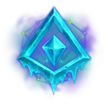
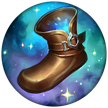




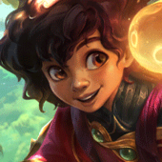
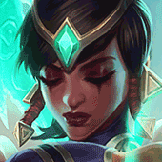

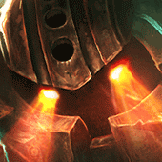
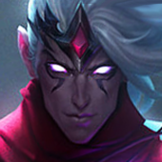



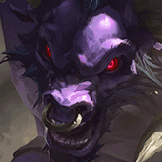

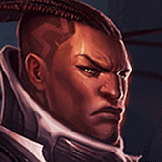
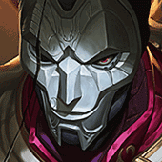
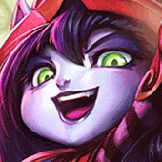
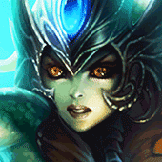

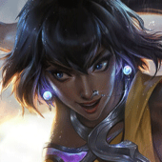
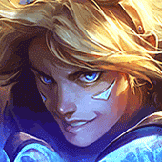
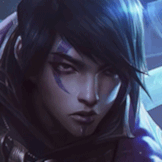
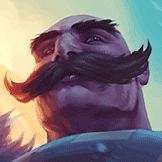
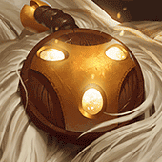
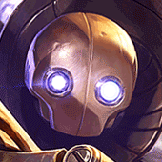
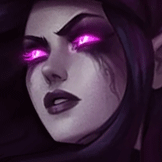
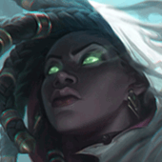
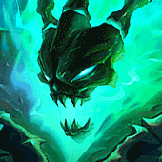
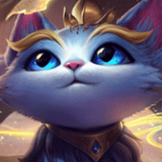



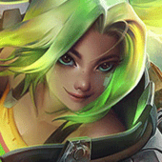
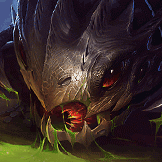
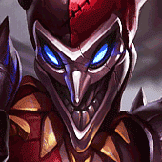
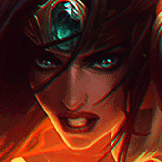
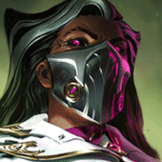
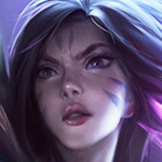
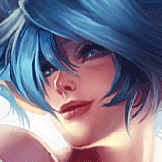

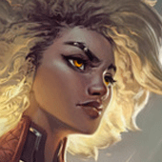
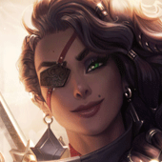
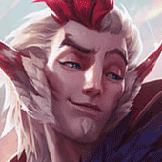
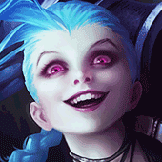

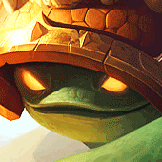









You must be logged in to comment. Please login or register.